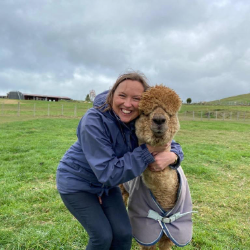Stop motion animation involves creating the illusion of movement by capturing a series of still images, each showing slight changes from the previous one, then playing them back in sequence. Here are the key technical principles of stop motion animation, along with examples:
1. Frame-by-Frame Photography
Principle: Each frame is a photograph where the subject or elements are slightly adjusted before the next photo is taken.
Example: In "Coraline" by Laika, every subtle movement of the characters, like Coraline blinking or moving her mouth to speak, was achieved by adjusting the puppet and capturing a new frame.
2. Animation on Twos or Threes
Principle: Instead of photographing every single frame, animators often shoot on 'twos' (every second frame) or 'threes' (every third frame) to create a more natural motion and reduce workload, although this can vary based on the desired effect.
Example: "Wallace & Gromit" animations typically use this technique to achieve a smooth yet slightly jerky movement akin to traditional animation, enhancing the comedic effect.
3. Persistence of Vision
Principle: The human eye retains an image for a fraction of a second after it disappears, allowing a sequence of static frames to appear as motion when played back at around 24 frames per second (fps) or more.
Example: The fluid movement in "The Nightmare Before Christmas" relies on this principle, where each slight adjustment of Jack Skellington's position tricks the eye into seeing continuous movement.
4. Timing and Spacing
Principle: The speed of the animation (timing) and the distance objects move between frames (spacing) dictate how fast or slow the action appears. Closer spacing and more frames make for slower, smoother movements; wider spacing for quicker, snappier actions.
Example: In "Fantastic Mr. Fox," the pacing of characters' movements was meticulously timed to match the personality and narrative pace, with quick, sharp movements for action scenes and slower, more deliberate movements for dramatic moments.
5. Arcs in Motion
Principle: Most natural movements follow an arc rather than a straight line, giving animations a more lifelike quality.
Example: In "Kubo and the Two Strings," the characters' arm movements follow arcs when they gesture or throw, contributing to the realism of their actions despite being stop-motion puppets.
6. Squash and Stretch
Principle: To suggest weight and flexibility, objects can be compressed (squashed) or elongated (stretched) during motion. This principle is less common in stop motion due to the physical nature of the puppets but can be approximated.
Example: "ParaNorman" uses slight adjustments in puppet positioning to give a sense of squash and stretch, particularly in the movements of the zombie characters to add to their comedic and exaggerated nature.
7. Anticipation
Principle: Actions are often preceded by preparatory movements (anticipation) which signal to the audience that something is about to happen, enhancing the believability and readability of the animation.
Example: In "Chicken Run," before a character jumps or moves quickly, there's a slight backward movement or crouch, which sets up the action and makes it more convincing.
8. Use of Rigging and Armatures
Principle: Puppets are often built around metal or wire armatures that allow for precise posing. The animator then adjusts these armatures frame by frame.
Example: The detailed expressions and movements in "Isle of Dogs" were possible due to the sophisticated armatures inside each dog puppet, allowing for nuanced facial and body animations.
9. Lighting and Shadows
Principle: Lighting affects the mood, depth, and texture in stop motion, just as in any form of cinema. Shadows can add realism and help define the space and time of day.
Example: "Corpse Bride" uses different lighting setups to distinguish between the vibrant, colorful living world and the dim, blue-tinted underworld, enhancing the narrative through visual storytelling.
10. Camera Movement
Principle: While traditionally stop motion used static cameras, modern stop motion often involves moving the camera on dollies or rigs to create dynamic shots.
Example: "A Town Called Panic" features dynamic camera movements that give the animation a lively, almost frenetic feel, contributing to the film's unique humor and style.
11. Post-Production
Principle: After filming, stop motion often requires post-production for adding sound, color correction, and sometimes digital effects or enhancements.
Example: "Kubo and the Two Strings" combined traditional stop-motion with CG effects for elements like water, enhancing the visual spectacle without detracting from the hand-crafted feel.
These principles, when applied with creativity and technical precision, allow stop-motion animators to bring inanimate objects to life, creating compelling, cinematic experiences.


